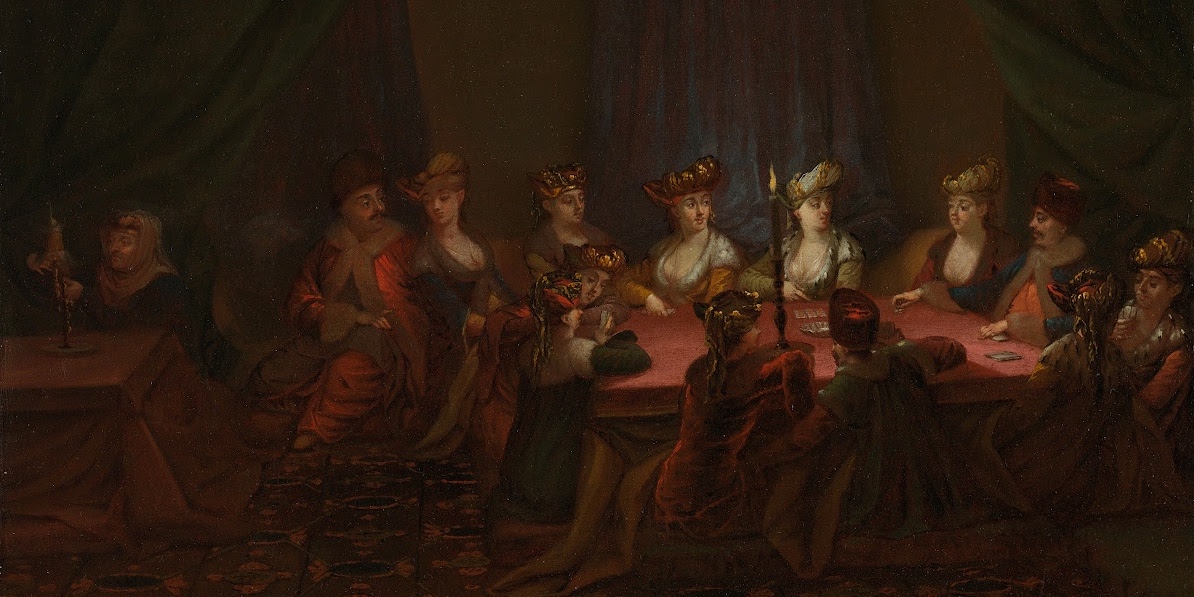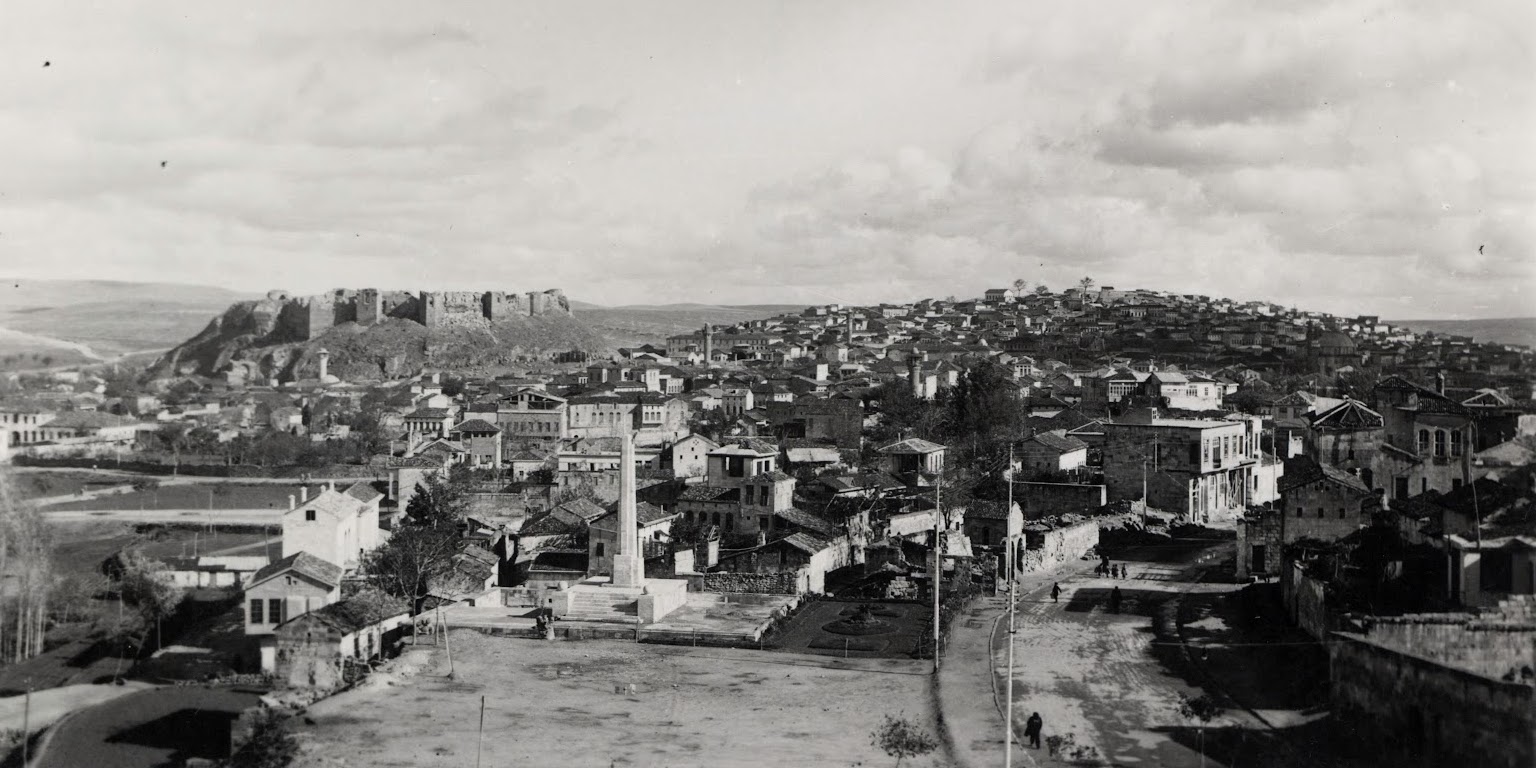Layers of History in Downtown Beirut
| The modern history of Beirut has been defined by periods of intense construction, destruction, and reconstruction. In this episode, we explore the layers of history in Beirut's cityscape through a walking tour with Rayya Haddad. We chart Beirut's transformation from its rise as a late Ottoman capital through the expansion of the port during the French Mandate period, its golden age as a commercial center in independent Lebanon during the 1950s and 60s, the long civil war that lasted from 1975 to 1990, and the postwar reconstruction carried out by the company Solidere. We also explore the history of Beit Beirut, a unqiue building designed by Youssef Aftimus--Beirut's foremost architect of the late Ottoman and French Mandate period--from its Mediterranean revivalist origins to its redesign as a sniper's haven during the war, ending with its rescue and renovation by activists in recent decades. We conclude with some thoughts on what this layered history of the city means for the new layer of destruction and reconstruction created by the port explosion during August 2020.

 | Click for RSS Feed | 
|

|
The modern history of Beirut has been defined by periods of intense construction, destruction, and reconstruction. In this episode, we explore the layers of history in Beirut's cityscape through a walking tour with Rayya Haddad. We chart Beirut's transformation from its rise as a late Ottoman capital through the expansion of the port during the French Mandate period, Beirut's golden age as a commercial center in independent Lebanon during the 1950s and 60s, the long civil war that lasted from 1975 to 1990, and the postwar reconstruction carried out by the company Solidere. We also explore the history of Beit Beirut, a unqiue building designed by Youssef Aftimus--Beirut's foremost architect of the late Ottoman and French Mandate period--from its Mediterranean revivalist origins to its redesign as a sniper's haven during the war, ending with its rescue and renovation by activists in recent decades. We conclude with some thoughts on what this layered history of the city means for the new layer of destruction and reconstruction created by the port explosion during August 2020.
Contributor Bios
Currently based in the U.S., Rayya Haddad carries her camera, and her passion for dance, percussion, Mother Nature and food with her wherever she goes. She has created interventions, performances, photographic projects and installations that illuminate alternative possibilities to the limitations and restrictions placed on so many based on race, ethnicity, nationality, immigration or social status, gender and sexual identity, and more. With commercial photography her work is primarily focused on the following 3 subjects; product ranging from jewelry to the culinary arts; music, dance, theatre and performance art, and family portraiture. She received a Bachelor in Fine Arts from the School of the Art Institute, Chicago after her studies of sociology in New Orleans, Louisiana.
Chris Gratien is Assistant Professor of History at University of Virginia, where he teaches classes on global environmental history and the Middle East. His first monograph entitled The Unsettled Plain: An Environmental History of the Late Ottoman Frontier is forthcoming with Stanford University Press.
Graham Auman Pitts is a scholar of modern environmental and social history. His work focuses primarily on Lebanon in its regional and global contexts. He is a visiting professor in the Elliott School of International Affairs at George Washington University.
Nada Moumtaz is Assistant Professor in the Department for the Study of Religion and in Near and Middle Eastern Civilizations at the University of Toronto. Her book, God's Property: Islam, Charity, and the Modern State will be published by University of California Press in August 2021.
Credits
Episode No. 508
Release Date: 29 July 2021
Recording Location: Beirut
Music and sound elements (by order of appearance): Nasri Shamseddine - Samhina; BBC - بيروت مدينة منكوبة; Karawan - Ya Ganna; This Week - The Agony of Lebanon; Azar Habib - Ya Rayeh; Eudet Kaado - Mowasheh El Rabiy; Soapkills - Aranis; Prof. Elia Baida - Yalli Hajarti Habayeb; Soft and Furious - So What?
Sound production by Chris Gratien
Additional thanks to Sam Dolbee
Release Date: 29 July 2021
Recording Location: Beirut
Music and sound elements (by order of appearance): Nasri Shamseddine - Samhina; BBC - بيروت مدينة منكوبة; Karawan - Ya Ganna; This Week - The Agony of Lebanon; Azar Habib - Ya Rayeh; Eudet Kaado - Mowasheh El Rabiy; Soapkills - Aranis; Prof. Elia Baida - Yalli Hajarti Habayeb; Soft and Furious - So What?
Sound production by Chris Gratien
Additional thanks to Sam Dolbee
Further Listening
 |
Bruce Burnside & Sam Dolbee | 320
6/24/17
|
Ottoman New York |
 |
Sumayya Kassamali | 373
8/19/18
|
Migrant Labor in Contemporary Beirut |
 |
Kishwar Rizvi | 244
7/2/16
|
Neo-Ottoman Architecture and the Transnational Mosque |
 |
Dylan Baun | 497
3/11/21
|
Youth Politics and Populism in Interwar Lebanon |
 |
Jasmin Daam, Esther Möller, Cyrus Schayegh, Selim Deringil | 467
7/18/20
|
The Mediterranean Viewed from the Southern Shore |
Images

Beirut Sea Front with view of Saint Georges Hotel, May 1965. Source: Charles W. Cushman Collection

Residential section near in Minet El Hosn section of Beirut, May 1965. Source: Charles W. Cushman Collection.

Saint Georges Hotel, May 2018. Photo by Chris Gratien.

Zaituna Bay, May 2018. Photo by Chris Gratien.

All Saints International Congregation, May 2018. The location of the church marks the pre-reclamation shoreline. Photo by Chris Gratien.

Near Bab Idriss, a building with elements typical of the Mediterranean revivalism of the late Ottoman and French Mandate periods, May 2018. Photo by Chris Gratien.

Partially excavated Roman baths in Beirut, adjacent to the Saray government building. They were discovered during the 1960s and attained their present appearance through the postwar reconstruction from the 1990s onward. Photo by Chris Gratien.

Beirut Municipality, designed by Youssef Aftimus. Photo by Chris Gratien.

Martyrs' Monument in Martyrs Square commemorating the dissidents executed by the Ottoman government in 1916, May 2018. Designed by Marino Mazzacurati. Photo by Chris Gratien.

"Les pleureuses" by Youssef Howayek, now kept at the Sursock Museum, originally placed in Martyrs' Square in 1930. Source: Wikiwand

Left: Minaret of Al-Amin Mosque. Right: Bell Tower of Saint George Maronite Cathedral, built at the turn of the 20th century and reconstructed after the Lebanese Civil War (1975-1990), May 2018. Photo by Chris Gratien.

Al-Amin Mosque, May 2018. Photo by Chris Gratien.

Construction in downtown Beirut, May 2018. Photo by Chris Gratien.

A renovated block of downtown Beirut between Damascus Street and Monot Street, May 2018. Photo by Chris Gratien.

The Green Line demarcating the barrier between West and East Beirut, circa 1982. Photo via r/AbandonedPorn.

"The Egg," June 2014. Photo by Chris Gratien

The Barakat building or Beit Beirut, May 2018. Photo by Chris Gratien.

Faux bullet holes added to the facade of the renovated Beit Beirut, May 2018. Photo by Chris Gratien.
Select Bibliography
Fawwāz, Layla. Merchants and Migrants in Nineteenth-Century Beirut. Harvard University Press, 1983.
Hanssen, Jens. Fin De Siecle Beirut. Oxford: Oxford University Press, 2005.
Hourani, Najib. 2012. “From National Utopia to Elite Enclave: The Selling of the Beirut Souqs.” In Global Downtowns, edited by Gary McDonogh and Marina Peterson. Philadelphia: University of Pennsylvania Press.
______. 2015. "People or Profit?: Two Post-Conflict Reconstructions in Beirut". Human Organization. 74, no. 2: 174-184.
Kassir, Samir. Beirut. University of California Press, 2011.
Lteif, Diala. "Change for Beirut must start in the oppressed neighbourhood of Karantina." Toronto Star (August 17, 2020) https://www.thestar.com/opinion/contributors/2020/08/17/change-for-beirut-must-start-in-the-oppressed-neighbourhood-of-karantina.html.
Makdisi, Saree. 1997. "Laying Claim to Beirut: Urban Narrative and Spatial Identity in the Age of Solidere". Critical Inquiry. 23, no. 3: 661-705.
Moumtaz, Nada. God's Property: Islam, Charity, and the Modern State. University of California Press, 2021.
Naeff, Judith. Precarious Imaginaries of Beirut: A City's Suspended Now. 2018.
Rayyan, Alia. "Lather and Rinse Well: A Conversation with Soapkills." Bidoun (Spring 2004) https://www.bidoun.org/articles/soapkills-lather-and-rinse-well.
Saliba, Robert, and Michel Assaf. Beirut 1920-1940: Domestic Architecture Between Tradition and Modernity. 1998.
Sawalha, Aseel. Reconstructing Beirut: Memory and Space in a Postwar Arab City. University of Texas Press, 2011.
Tanielian, Melanie S. The Charity of War: Famine, Humanitarian Aid, and World War I in the Middle East. Stanford University Press, 2020.










Comments
Post a Comment
Due to an overwhelming amount of spam, we no longer read comments submitted to the blog.